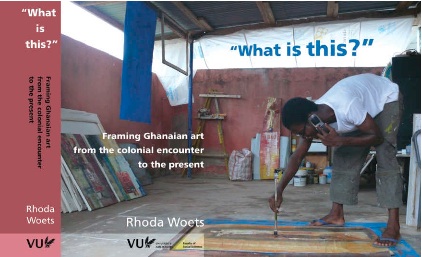Anthropologist Rhoda Woets not only wrote an essay for SMBA Newsletter #129 on the work of kari-kacha seid’ou, she also lectured modern and contemporary Ghanaian art on September 30. During this afternoon Woets discussed the work of several artists in relation to the complex definition(s) of contemporary Ghanaian art. The notion of contemporary art in Ghana is for instance related to institutions such as art schools and art galleries. Popular art, craftwork and weaving such as kente are usually not included in this category.
The Ghanaian government has a tradition in stimulating the arts. In 1952, five years before the nation’s independence from the United Kingdom, the College of Art in Kumasi was established. Resonating its colonial relations, the school was affiliated with art institutions in London, such as Slade and the Royal College. Ghana’s first president Kwame Nkrumah continued many of these international connections, as he took Western culture as exemplary in his mission to create an independent nation-state. In his vision modern art was a tool to construct identity; he argued that artists should express Ghanaian cultural history in their work. Many Ghanaians indeed relied on African traditions and symbols in order to express their identity. One example of this concept of ‘Sankofa’ is the ‘Accra Optimist Club’, a group of Ghanaian men who wore traditional cloths during colonial times.
More


